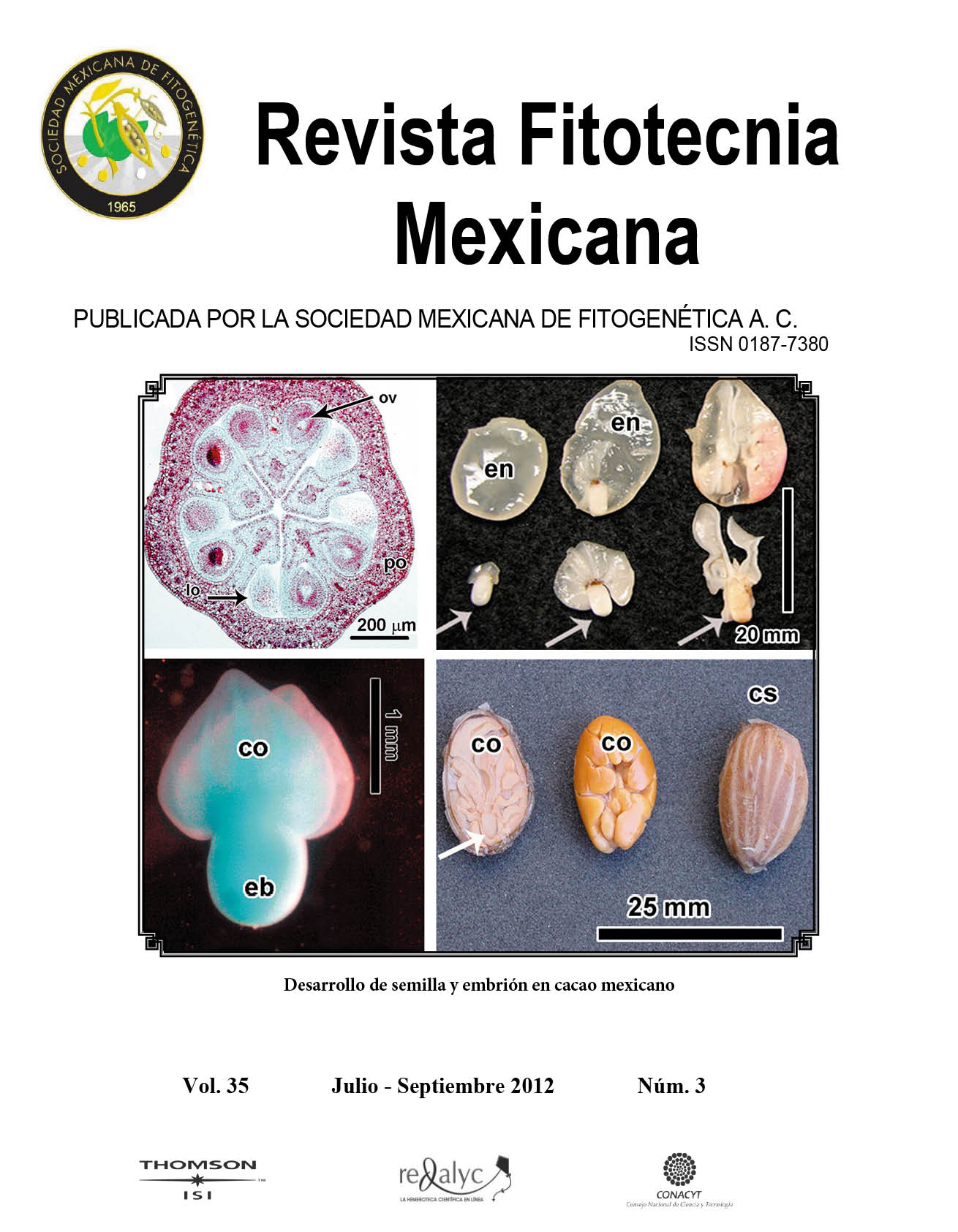PHOSPHORUS-EFFICIENCY IN MAIZE GERMPLASM AT SEEDLING STAGE FROM THE P’URHÉPECHA PLATEAU
Main Article Content
Abstract
Reduced phosphorus (P) availability in the soil is one of the main yieldlimiting factors for maize (Zea mays L.) production, particularly on acid soils. Changes in root morphology and architecture are regulated by P availability and are particularly important for phosphorus acquisition. This study was conducted to evaluate the genotypic variability of maize from the P’urhépecha Plateau in Michoacán, México, by quantifying P efficiency and root characteristics associated with P efficiency at seedling stage. The experiment was conducted under greenhouse conditions, in nutrient solution at low (1 μM) and high (1 mM) KH2PO4 availability. Plant growth traits, root architecture and morphology were evaluated for 7 d. Accessions differed greatly in plant growth, root morphology and P efficiency (defined as growth under suboptimal P availability). The accessions were divided into three categories based on P efficiency and four categories according to P efficiency in combination with high phosphorus response. P-efficient accessions had greater values of root and shoot dry matter production, root to shoot ratio, seminal root length, and root hairs density of seminal and primary roots. The increase in root hair density and in seminal root length resulted in increased plant growth under low P, at seedling stage. These results indicate that maize from the P’urhépecha Plateau exhibit variation for P efficiency and root architecture.

